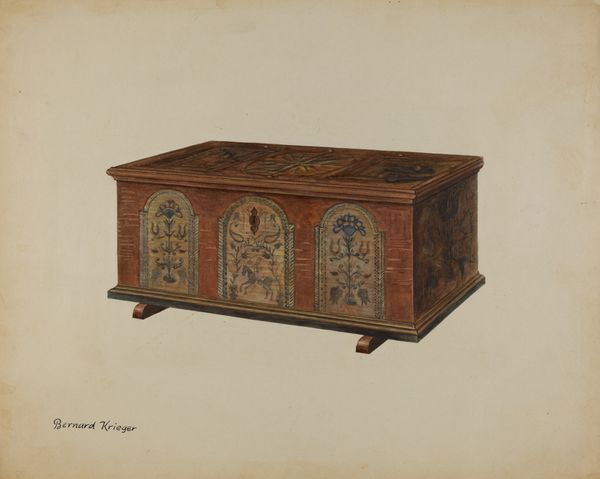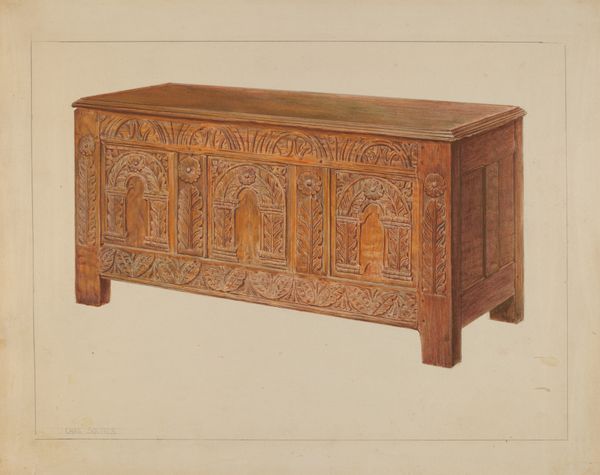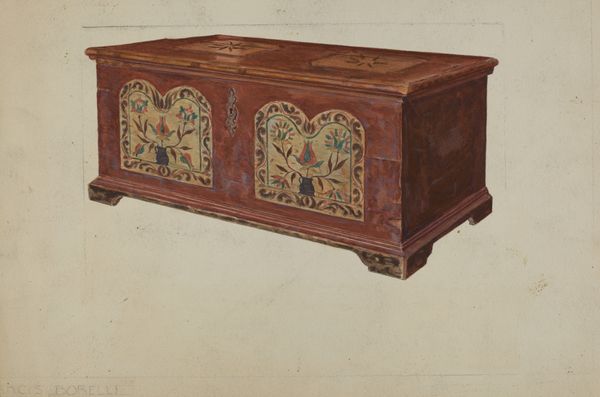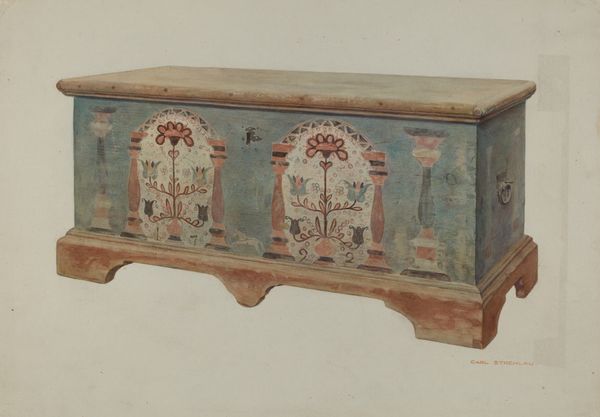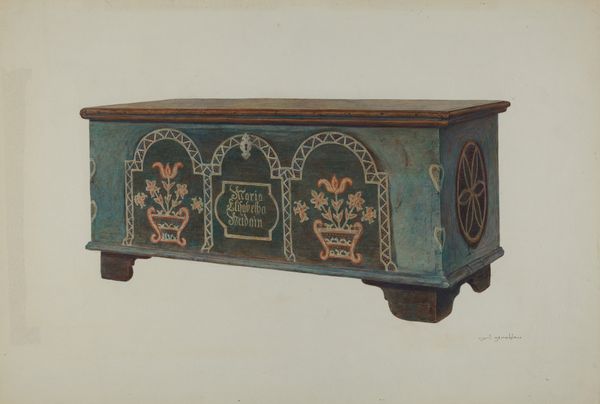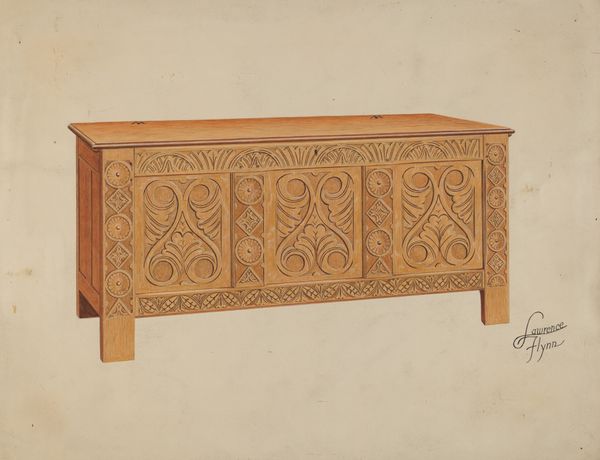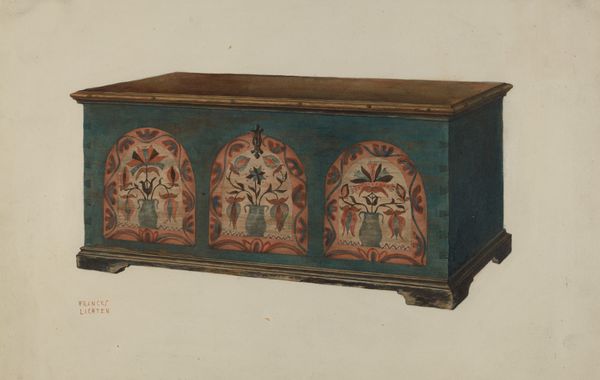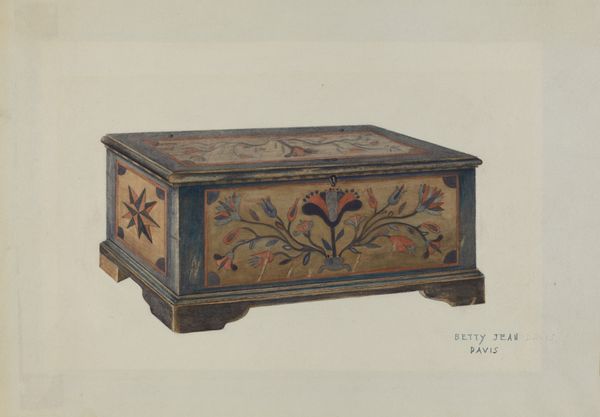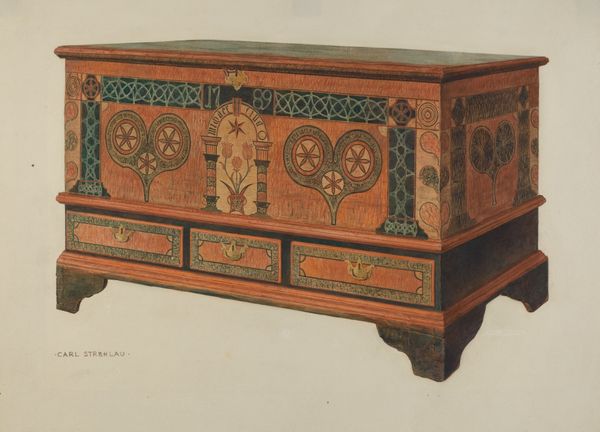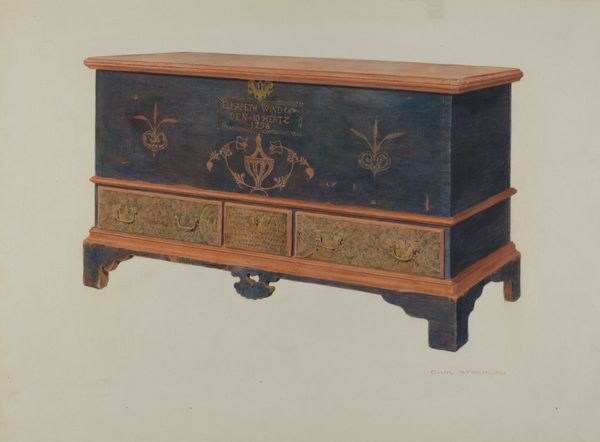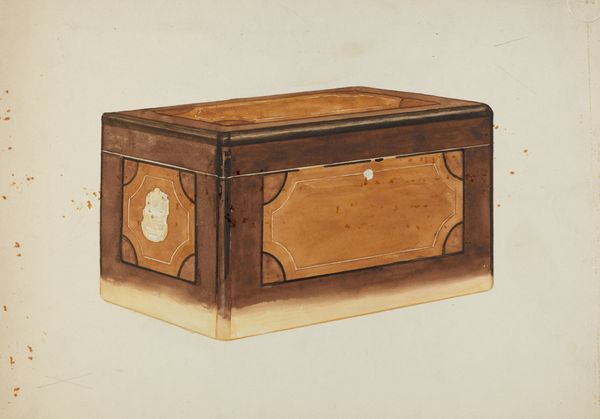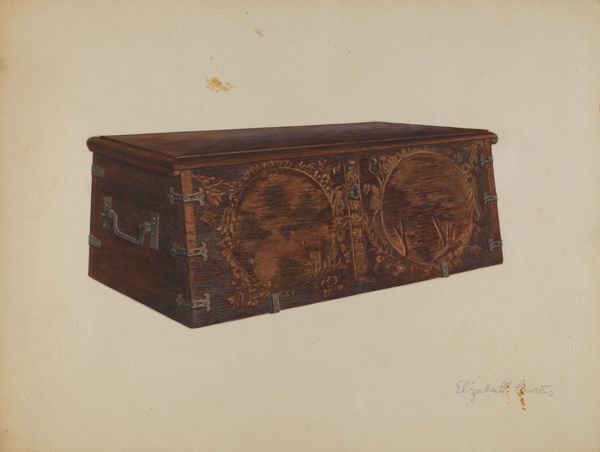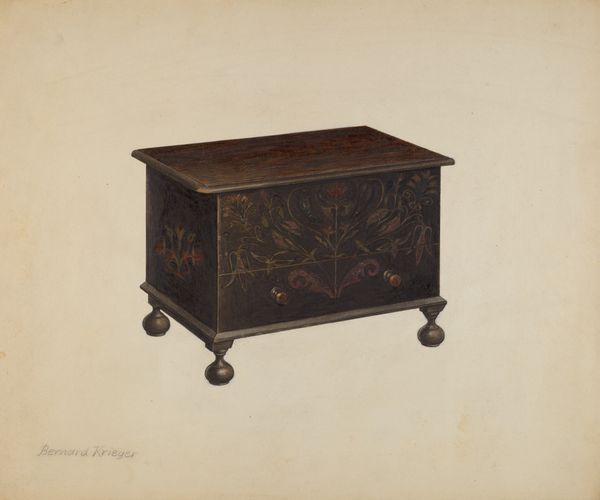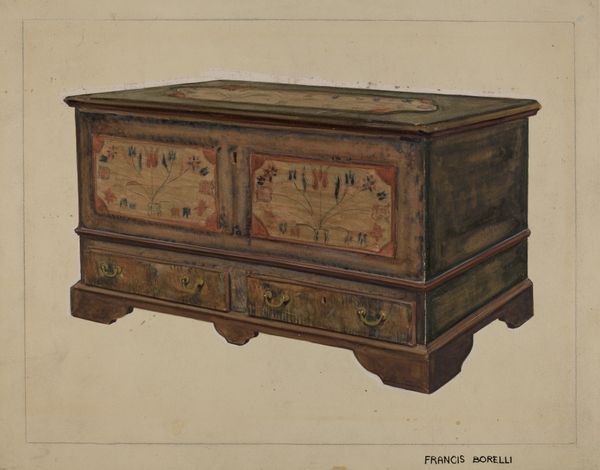
drawing, watercolor, wood
#
drawing
#
sculpture
#
watercolor
#
folk-art
#
wood
#
genre-painting
#
decorative-art
#
watercolor
Dimensions: overall: 34.4 x 49.3 cm (13 9/16 x 19 7/16 in.) Original IAD Object: 23 1/2" high; 51" long; 24" wide
Copyright: National Gallery of Art: CC0 1.0
Curator: This drawing, simply titled "Chest," by Ethelbert Brown, produced sometime between 1935 and 1942, presents us with a puzzle in representation. What strikes you first about it? Editor: It's quite charming, actually. The palette—those muted blues, reds, and creams—gives it a kind of antique, almost dreamlike quality. But there's a rigid formality to the design, a studied precision that I find intriguing. Curator: Indeed. Focus on the front plane; we see this symmetry of stylized flowers. What might these evoke? And observe their repetition – the triplicate layout itself might carry a significance. Editor: Flowers, universally, signify growth, beauty, and often, specific symbolic meanings attached to particular blossoms. Tulips suggest perfect love. In the chest, perhaps, these motifs embody themes of domesticity and virtue—treasured attributes placed on an object meant to safeguard possessions. Curator: Precisely! It becomes clear this object and the artistic choices made reflect cultural values around heritage and remembrance. Also of note, this watercolor drawing’s composition shows almost an orthogonality—receding lines all appear to converge on a single point, emphasizing planar depth. Editor: And how the design simulates texture! I immediately assume it’s a representation of an extant object. Is the artist transcribing a specific example, celebrating it, or idealizing its archetypal form, imbuing it with timeless significance? The initials in that medallion reinforce this, right? Jacob Jutzae claiming the chest. Curator: Note how these forms all come together. The inscription with the apparent owner, floral iconography, symmetry of form – these formal decisions all indicate it serves both practical and cultural function as a keeper of items and identity. Editor: Brown's re-presentation definitely adds another layer of interpretation; even within the confines of the work on paper, the artist acknowledges, if only subtly, the chest's three-dimensionality. It reminds me how objects embody histories far beyond their material forms. Curator: Absolutely, reflecting layers of ownership, aesthetic preference, and personal association through the lens of form. This work provides us ample evidence how semiotics inform function through art objects. Editor: And that cultural exchange continues even to this day through Brown’s thoughtful transcription. Thank you.
Comments
No comments
Be the first to comment and join the conversation on the ultimate creative platform.
